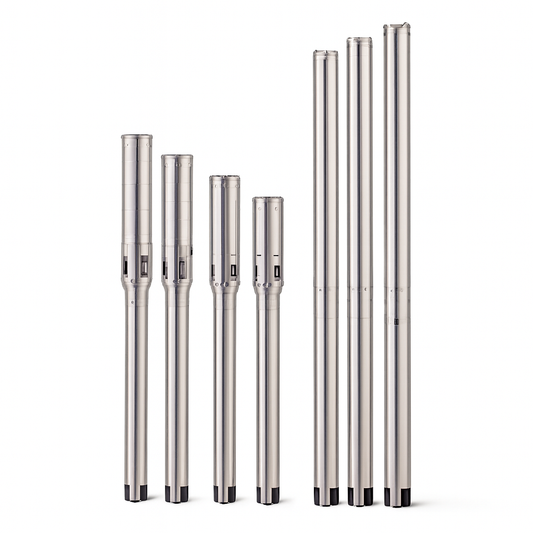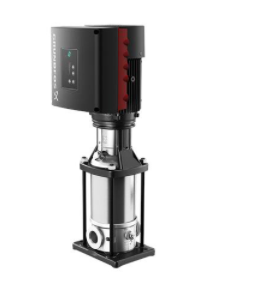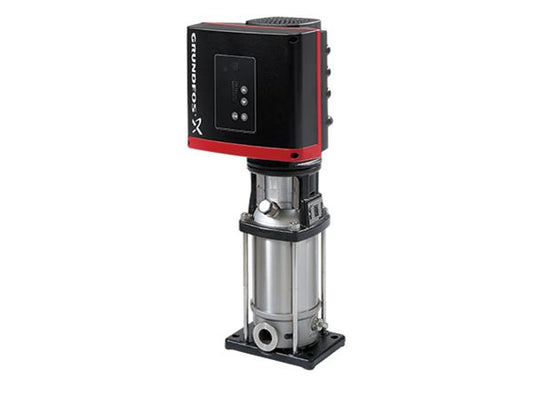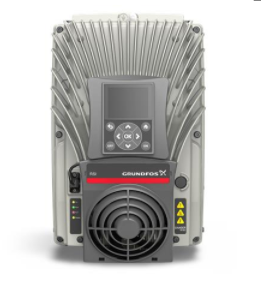 With so much emphasis on climate change, remoteness & electricity prices, this coupled with the growing concerns of the sustainability of our water resources, it’s not surprising people are turning to the sun for assistance. Solar pumps are becoming more & more common with farmers, mining companies and alike. Access to clean water has been a growing concern in many regions for a long time now. Many areas of the world use diesel-fueled systems to pump groundwater. But in countries grappling with both water and electricity scarcities, they need a renewable power source for pumping water. This is where a solar water pump comes into play. It is a more efficient alternative & has a low maintenance cost compared to diesel fuel. But there are some perks & quirks of solar water pumps we thought would be helpful for now.
With so much emphasis on climate change, remoteness & electricity prices, this coupled with the growing concerns of the sustainability of our water resources, it’s not surprising people are turning to the sun for assistance. Solar pumps are becoming more & more common with farmers, mining companies and alike. Access to clean water has been a growing concern in many regions for a long time now. Many areas of the world use diesel-fueled systems to pump groundwater. But in countries grappling with both water and electricity scarcities, they need a renewable power source for pumping water. This is where a solar water pump comes into play. It is a more efficient alternative & has a low maintenance cost compared to diesel fuel. But there are some perks & quirks of solar water pumps we thought would be helpful for now.
What Is a Solar Water Pump?
As the name suggests, a solar water pump uses generated electricity from the sun to pump water. It operates on the energy produced by the PV (photovoltaic) panels generated by collected sunlight. This solar-powered irrigation is a clean, simple and energy-efficient alternative to diesel or grid electricity water pumps. Once you have the panel, all you need is the energy that comes from the sun, which is completely free, and you can start pumping.
Solar water pumps are part of an environmental approach to agriculture.
Whether a region is developed or not, it can be used for reservoirs and irrigation systems. They can also be applied for the following purposes where pumping water is needed, such as:
-
Drinking and cooking water supply

- Livestock
-
Crop Irrigation
Moreover, solar irrigation represents a virtuous cycle. When the sun shines, it feeds the irrigation system, as well as the crops, which are dependent on the water.
Now let us talk about the main components in a solar pumping system. There are at least five common parts, and these are:
-
Water pump. This is the most important component of a water pumping system. It comes in three varieties: submersible, circulator, and booster pumps.
-
Solar panels. They are the key part of the solar-powered water pump. Also known as arrays, they generate electrical energy by separating electrons from atoms.
-
Solar batteries. They store the charge produced by the solar panel.
-
Pump controllers. A pump controller adjusts the pump system parameters to meet your needs, as well as shield the system.
-
Invertors. Converts DC into AC. This is important for a wide variety of electrical equipment involving water pumps.
Note: Solar water pumping systems are classified as direct current (DC) or alternating current (AC) systems. This depends on their motor’s ability
Understa nding how a solar water pump works
nding how a solar water pump works
The photovoltaic systems absorb radiant solar energy, transforming it into electricity. This generated
electricity supplies the entire solar pump system. The inverter converts the DC output of the PV system into AC, which drives the pump. These inverters also adjust the output frequency and voltage in real-time. On top of household needs, solar water pumps are commonly used in:
A water solar pump makes the ideal water withdrawal system for green energy.
It combines the advantages of reliability, economy, and environmental protection.
Different Types of Solar Water Pumps
Solar pumps are available in different types, but the most common varieties are:
1. Submersible solar pump This type of solar pump can lift to 650ft of water and is mostly used in deep water and undrilled areas. It is also ideal to use for livestock watering, pond aeration, home water systems, and more.
2. Surface solar pump Surface solar pumps work well in streams, storage tanks, shallow wells, or ponds. People use this type of solar pump when the depth of the water supply is 20ft or less from the ground. It can lift water from depths of up to 20cm. Thus, it cannot pump high water from deep wells or up to 200ft or more.
3. Direct current (DC) solar pump This pump features an electric motor that uses direct current or DC. Meaning there is no need for a battery or inverter when using this solar pump.
4. Alternate current (AC) solar pump This type of solar pump works the same as the DC one, but this time with alternating current. The DC produced by the switchboard is converted into AC. Keep in mind that the conversion can lead to power outages during production and use.

Advantages and Disadvantages of a Solar Water Pump A solar pump is a concept that gets rid of any power grids or fossil fuels for pumping groundwater. While it is environmentally friendly, as with other technologies—they have pros and cons.
Below, we are listing the advantages and disadvantages of their use. Let’s start with the benefits!
1. Zero fuel costs
Given that solar water pumps are powered by solar panels, it means they have zero fuel costs. This is a major advantage over fossil fuel pumps. For one, fuel can add a significant cost to farm irrigation. Using free solar energy is also an advantage over manual irrigation, which takes up a lot of your energy and time.
2. Less labour and maintenance
Another great advantage of solar water pumps is they help reduce the amount of labour & time needed for irrigating. Once you connect it to your chosen irrigation method and turn it on, it does all the job for you! Unlike with fossil fuel pumps, you won’t run out of fuel. Solar pumps are also good with warranty periods, so you do not have to stress over regular maintenance. Just make sure to maintain your solar panels and keep them clean so they produce as much energy as possible!
 3. Environmentally friendly
3. Environmentally friendly
A solar water pump uses renewable energy, making it sustainable and environmentally friendly. They don't produce harmful pollutants which is great for the environment. Its fossil fuel counterpart is likely to create a lot of pollution, both with fumes in the air and fuel spillage into the soil.
4. Reliable in regional and remote areas. Solar water pumps are reliable in regional and remote areas.
Deploying solar water pumps can help stimulate life. They can also be organised as per the needs of the farm and have extremely low operating costs. Paired with cost-efficiency in the long run, a solar water pumping system makes the perfect solution for regions with sunny days and enough sources of groundwater.
Now that you know the major advantages of a solar water pump, it is time to learn a few of its disadvantages.
1. Unable to pump water when it is dark: Solar panels are really, great, but they do need sunlight to operate. If you are thinking of irrigating in the early morning or late evening, the sunlight may not be enough for your solar water pump to work. But with a bit of planning, you can solve this problem. One of the best solutions for this is to get a water tank, if possible.
 Use your solar pump to pump water to your tank during the sunniest parts of the day. This is great for having water available on hand in case you need to irrigate your crops in gloomy weather.
Use your solar pump to pump water to your tank during the sunniest parts of the day. This is great for having water available on hand in case you need to irrigate your crops in gloomy weather.
2. High upfront costs: The upfront costs can be an issue for some farmers and homeowners. For one, they need to invest in water pumps and panels all at once. But in the long term, solar pumps are the cheaper option. No ongoing fuel costs, long pump lifetimes, and low labour and maintenance costs. On top of that, it is very promising that the cost of solar is continuing to fall, whereas the price of petrol is on the rise. They are a worthwhile investment if you ask us. They provide countless benefits over time.
3. Introducing Solar Water Pumps to Remote Areas: Adopting this solar concept in rural and remote areas can significantly help them in terms of their water pumping systems. The use of solar water pumps is now widely used in many regions as it is the easiest way to deliver water. This is especially true for farmers and for those living off the electricity grids. Access to water also remains an ongoing struggle for many people around the world. This is what solar water pumps aim to change by introducing a cost-effective counterpart.
The Bottom Line: Solar water pumps indeed can offer tremendous environmental and socio-economic advantages. This sustainable technology provides reliable power and water resources. This is especially beneficial to areas that aren’t linked to the electricity grid or where supplies of liquid fuel are rare. A solar water pump also proves how valuable using solar energy is in terms of renewable and sustainable options. No wonder why its popularity is increasing day by day!

 With so much emphasis on climate change, remoteness & electricity prices, this coupled with the growing concerns of the sustainability of our water resources, it’s not surprising people are turning to the sun for assistance. Solar pumps are becoming more & more common with farmers, mining companies and alike. Access to clean water has been a growing concern in many regions for a long time now. Many areas of the world use diesel-fueled systems to pump groundwater. But in countries grappling with both water and electricity scarcities, they need a renewable power source for pumping water. This is where a solar water pump comes into play. It is a more efficient alternative & has a low maintenance cost compared to diesel fuel. But there are some perks & quirks of solar water pumps we thought would be helpful for now.
With so much emphasis on climate change, remoteness & electricity prices, this coupled with the growing concerns of the sustainability of our water resources, it’s not surprising people are turning to the sun for assistance. Solar pumps are becoming more & more common with farmers, mining companies and alike. Access to clean water has been a growing concern in many regions for a long time now. Many areas of the world use diesel-fueled systems to pump groundwater. But in countries grappling with both water and electricity scarcities, they need a renewable power source for pumping water. This is where a solar water pump comes into play. It is a more efficient alternative & has a low maintenance cost compared to diesel fuel. But there are some perks & quirks of solar water pumps we thought would be helpful for now.



 Use your solar pump to pump water to your tank during the sunniest parts of the day. This is great for having water available on hand in case you need to irrigate your crops in gloomy weather.
Use your solar pump to pump water to your tank during the sunniest parts of the day. This is great for having water available on hand in case you need to irrigate your crops in gloomy weather.




